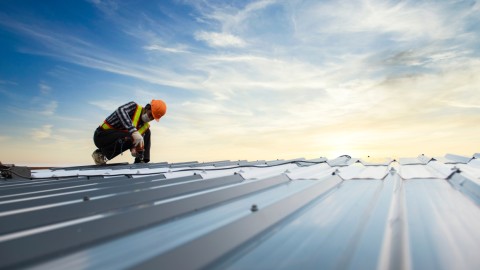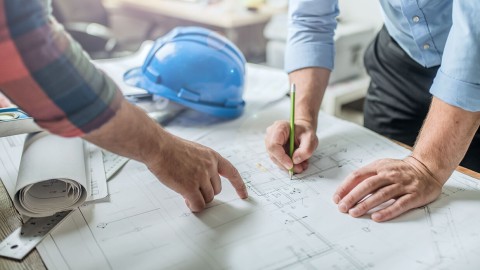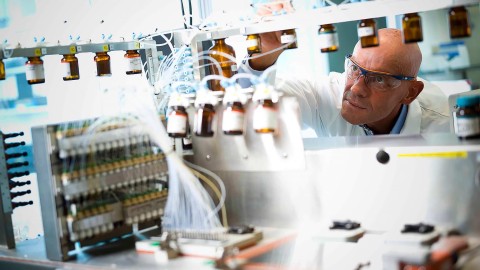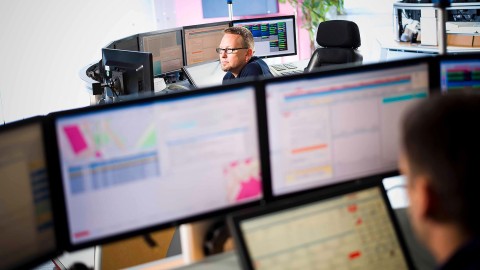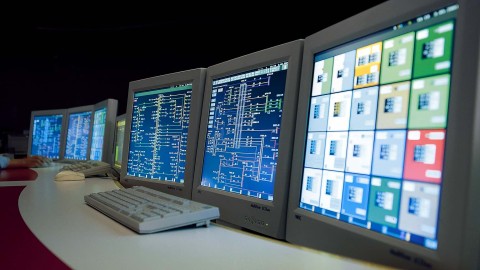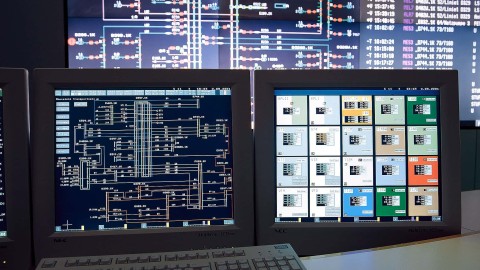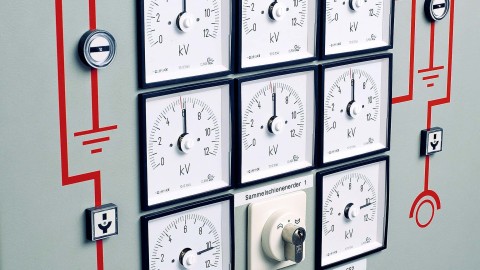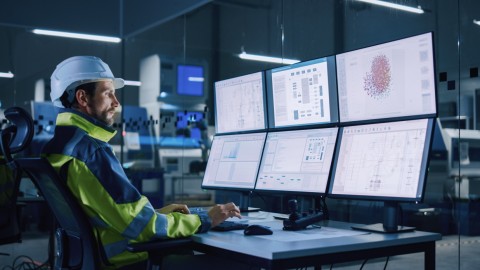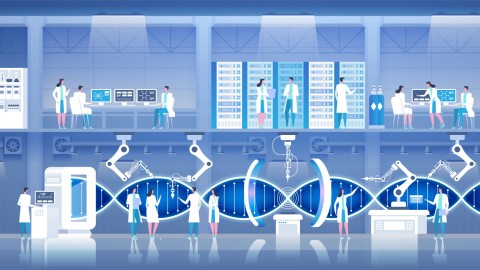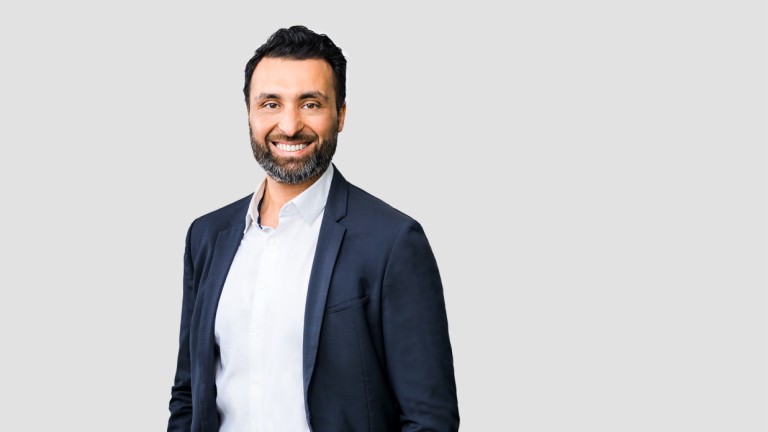Holistic planning and construction: A successful strategy from Industriepark Höchst
At a time when sustainability and efficiency are key issues for more and more companies and legal requirements such as the Building Energy Act (GEG) and the EU taxonomy are setting new standards for industrial construction, the holistic planning and construction of industrial buildings is becoming increasingly important. All aspects of a project - from planning and construction to operation - must be taken into account, as this is the only way to meet the high requirements.
Legal regulations place new requirements on buildings
The GEG aims to improve the energy efficiency of buildings, which not only reduces energy consumption but also lowers operating costs. The EU taxonomy promotes investment in sustainable projects and ensures that these projects meet environmentally friendly criteria. These regulations require companies to make greater use of sustainable materials and techniques in the planning and construction of buildings. The integration of renewable energies, such as the use of photovoltaic systems, also helps to cover the building's energy needs from renewable sources. At Industriepark Höchst, Infraserv is also increasingly digitizing its buildings. Thanks to building automation systems for monitoring and controlling the various automated systems, the industrial building is becoming a smart building and helps optimize energy consumption . For example, building management systems can be used to combine the decentralized energy supply with other heating, cooling and ventilation systems, thus helping to ensure optimum climate control in the building. A sensor-controlled lighting and shading system also helps to cut energy costs and reduce the ecological footprint of the building project.
The German Sustainable Building Council (DGNB) plays an important role in making such sustainable solutions visible to the outside world. It certifies construction projects according to strict sustainability criteria and awards different categories depending on the sustainability status.
Green cities also demand more sustainable industrial construction
Not only EU and federal laws, but also cities such as Frankfurt promote the greening of land areas, roofs and façades through their open space statutes, for example, and require the creation of compensation areas in the event of non-compliance. Similar measures can also be observed in Munich and Hamburg, where legal regulations and municipal requirements also contribute to the promotion of green building practices. And these regulations do not only affect private developers. Industrial buildings must also meet these requirements. At Industriepark Höchst, Infraserv integrates these requirements into its planning and relies on the expertise of its own "Site Planning" department to develop sustainable and legally compliant solutions.
Laboratories and special buildings require comprehensive expertise
In addition to such sustainability requirements, there are additional challenges when designing and operating laboratories or other special buildings such as high-rise and hazardous goods warehouses. After all, they should not only be functional, but also safe and efficient.
In laboratories, the laboratory layout , optimized walkways and strategically placed supply rooms are crucial for efficiency and low costs. Equally important is the correct arrangement of climate zones to keep energy requirements low. As with sustainable planning and construction, a holistic approach and many years of experience from operating our own laboratories also help here. This makes it possible to develop optimized solutions as early as the planning phase and to design laboratories in such a way that they meet the highest standards in terms of safety and efficiency.
The racking in Infraserv Logistics' new hazardous materials warehouse has around 21,500 pallet spaces.
The same applies to the planning and construction of special warehouses , such as the hazardous materials warehouse at Industriepark Höchst. Such buildings require a high level of expertise and experience, as legal and fire protection requirements must be taken into account in addition to efficient storage. The projects therefore place high demands on planning reliability, compliance with safety standards and flexibility in adapting to different storage requirements. Only through experience gained from the construction and operation of such warehouses is it possible to develop and implement tailor-made building solutions for the specific requirements.
Safety as a success factor in modern industrial construction
Deadlines, costs and quality are the key success factors of any construction project. They determine whether an investment in a new building or a renovation pays off. Safety also plays a decisive role in industrial construction. This is because it regularly involves complex production processes or research and development laboratories that need to be operated reliably - often involving the use of hazardous materials or process steps. This leads to special requirements for the buildings and the supporting services and lab services .
An entire team of experts is therefore needed to ensure safety during the construction phase as well as during subsequent operation. At Industriepark Höchst, Infraserv maintains a plant and occupational safety department, a plant fire department and various experts in all aspects of operating a laboratory or other industrial building. The experts not only support the industrial park, but also provide advice on external projects.
The same applies to specialized planners, site managers and experts who focus on these aspects. In addition to their own laboratories in the industrial park, they also implement external customer projects. Infraserv's experts work on site safety and project management in industrial and laboratory construction on a daily basis to ensure the highest standards.
Holistic approach enables modern and efficient industrial buildings
Comprehensive experience in the planning, implementation and operation of laboratories and industrial buildings is required to meet the demands of modern processes and sustainability. Industriepark Höchst is a good example of what this holistic approach can look like. Here, modern office buildings stand alongside resource-saving laboratories and efficient warehouse buildings. State-of-the-art plant technology meets energy efficiency and sustainable construction. Infraserv uses its extensive expertise and many years of experience in planning, implementation and integrated facility management to create attractive workspaces for a wide range of companies.
From large-scale projects to small laboratories, as the operator of Industriepark Höchst, Infraserv sees itself as a service provider and a reliable partner for sustainable, efficient and safe planning and construction. That's why Infraserv Höchst supports clients inside and outside the park in all aspects of constructing and operating laboratories and other industrial buildings, whether in individual aspects such as planning and permit management or as a general planner.


